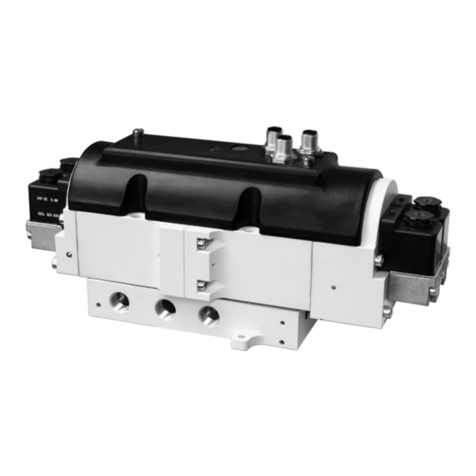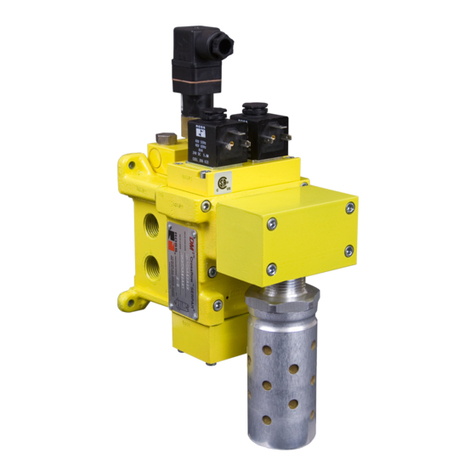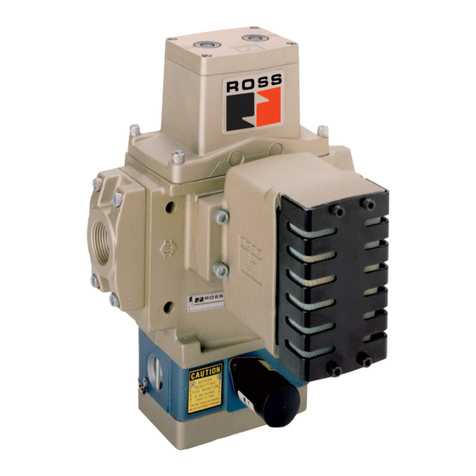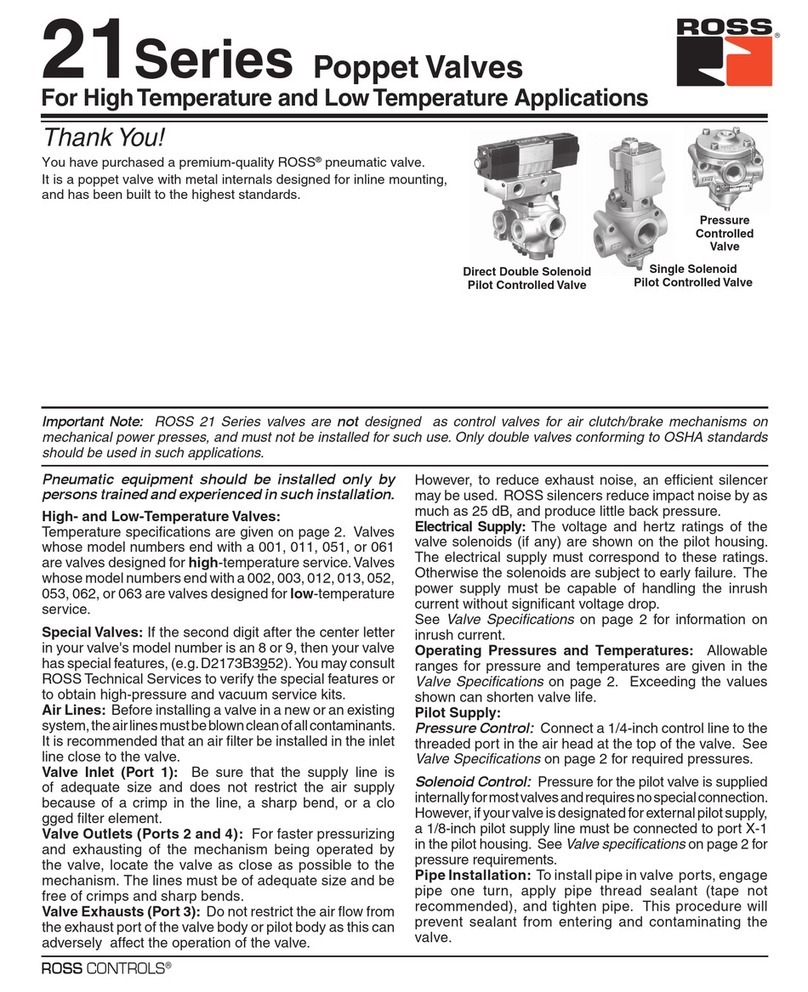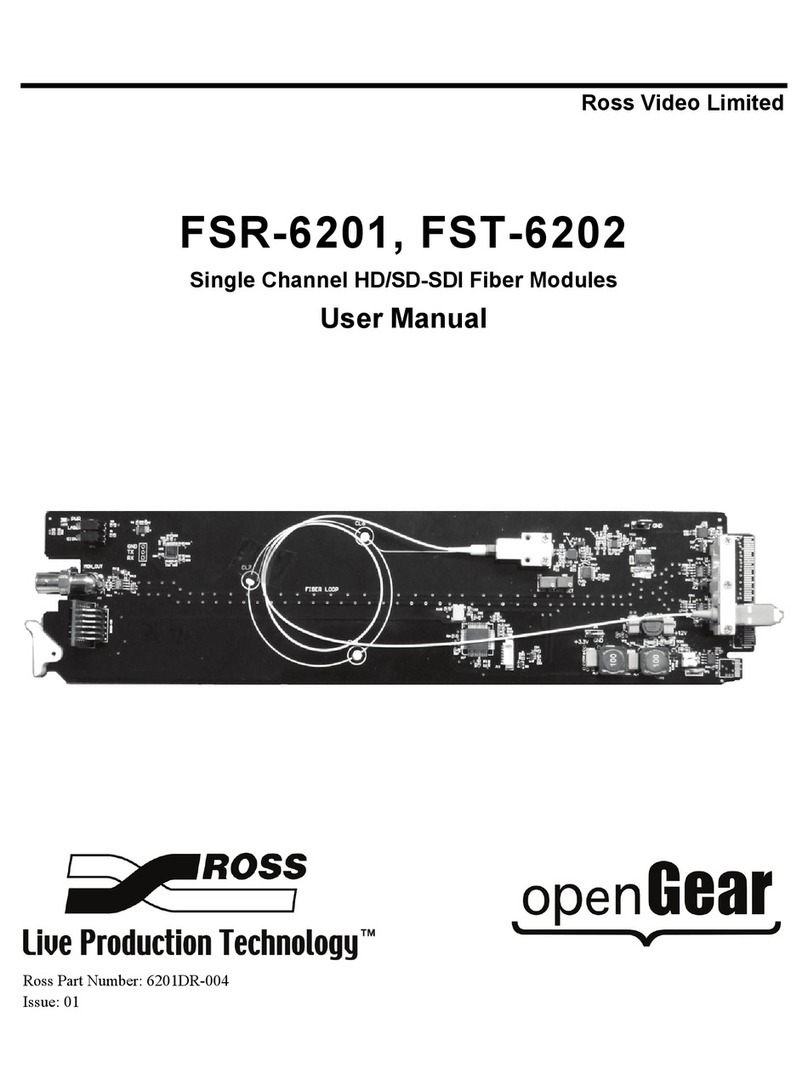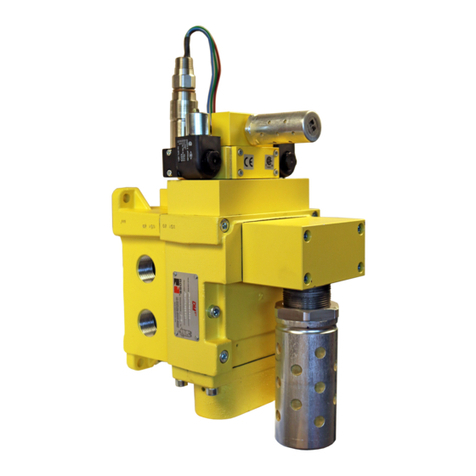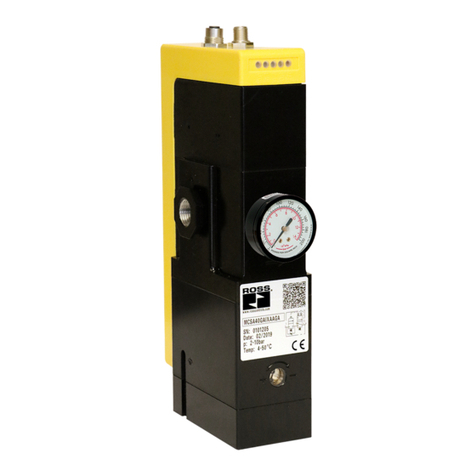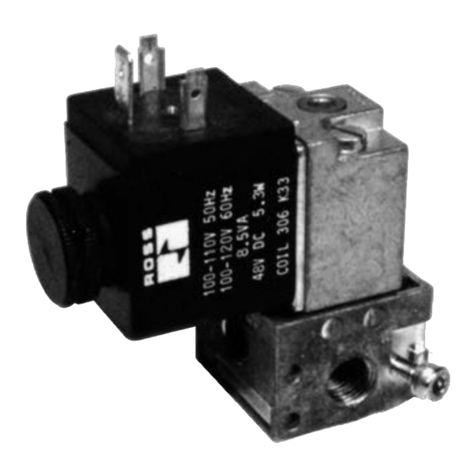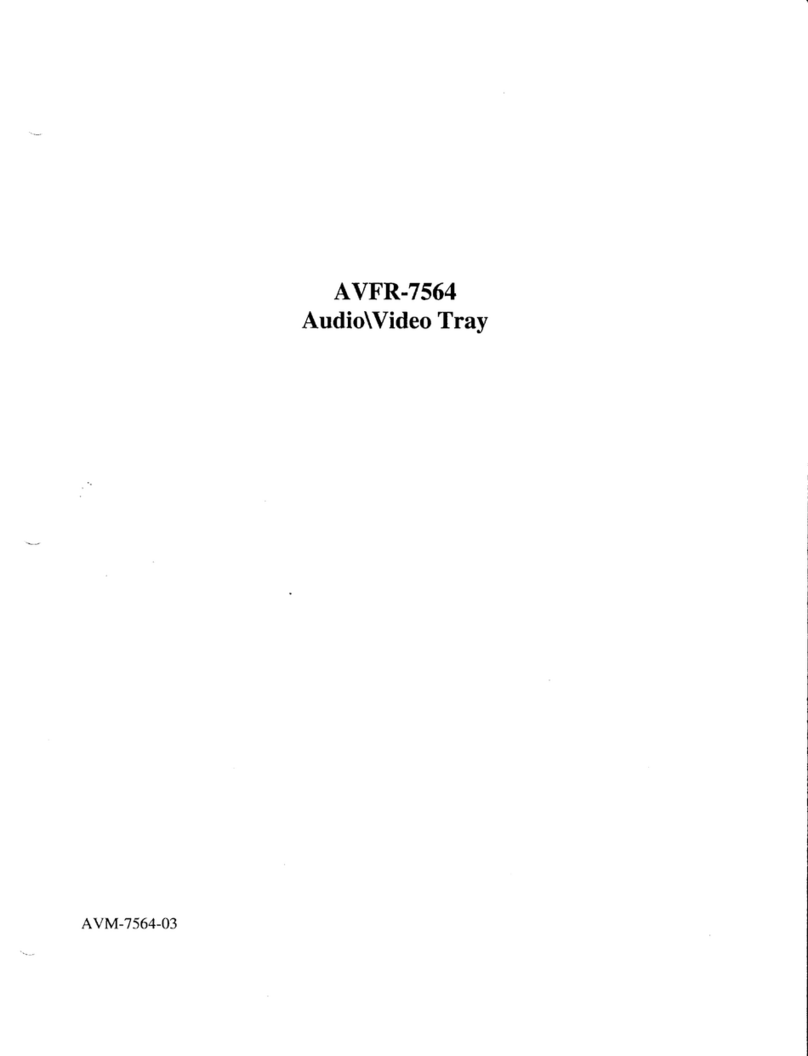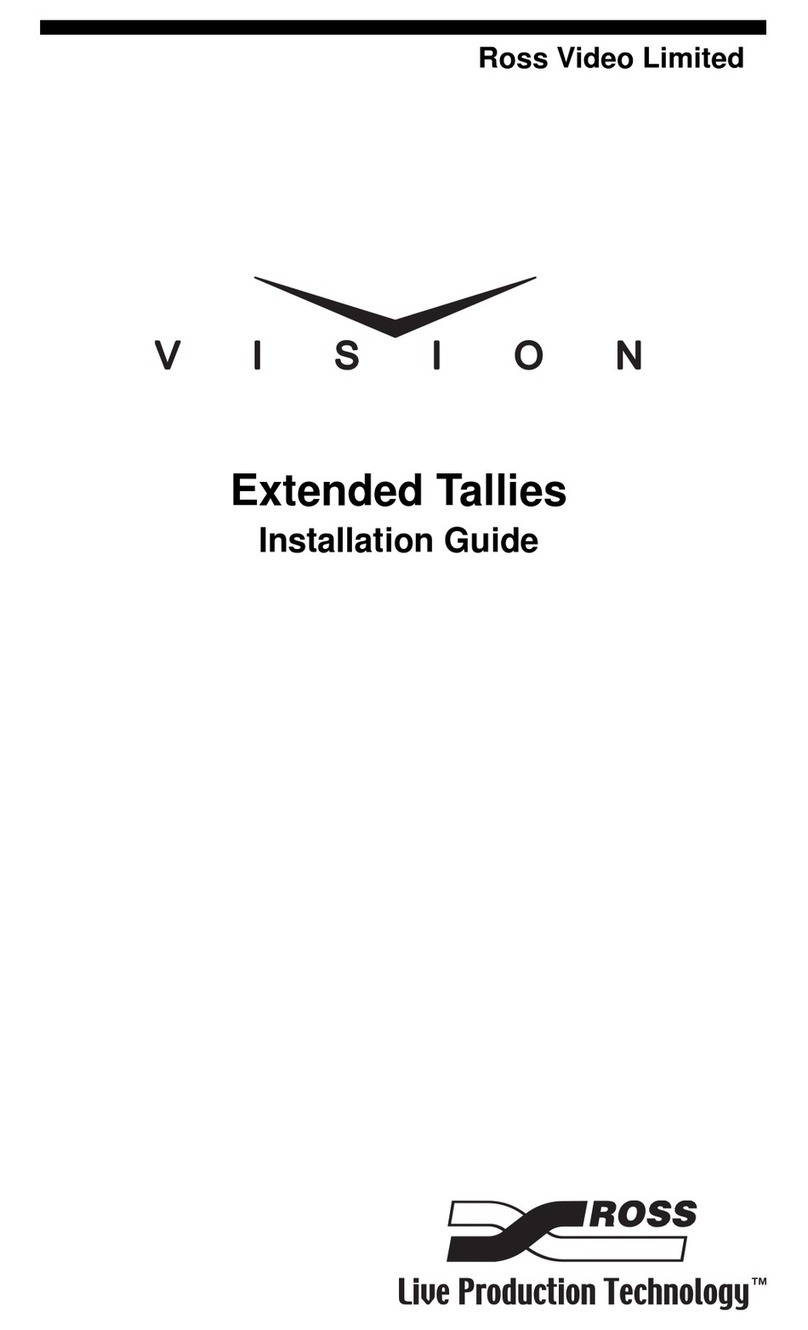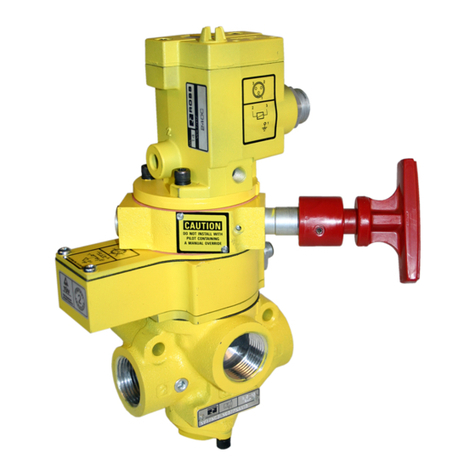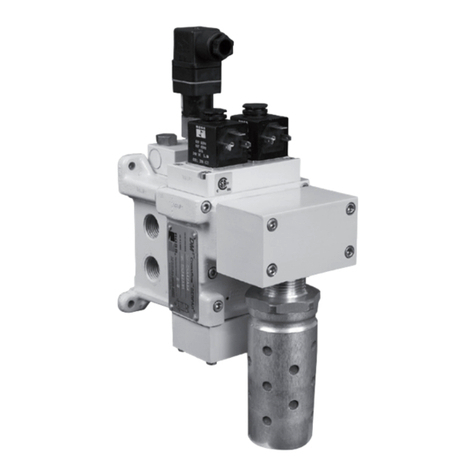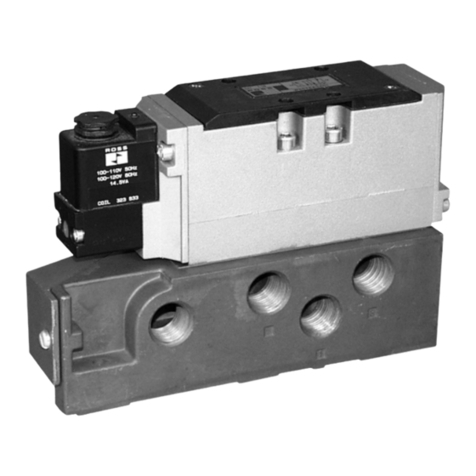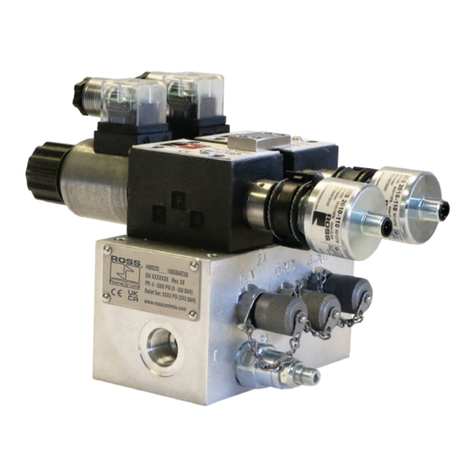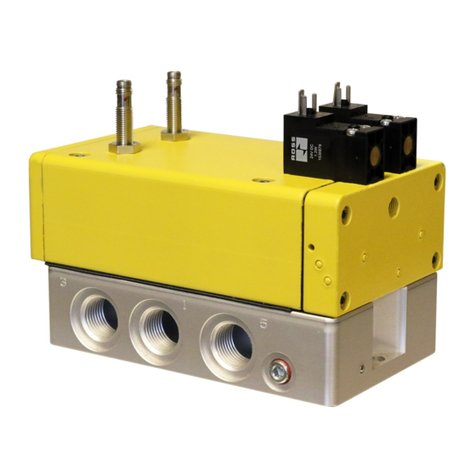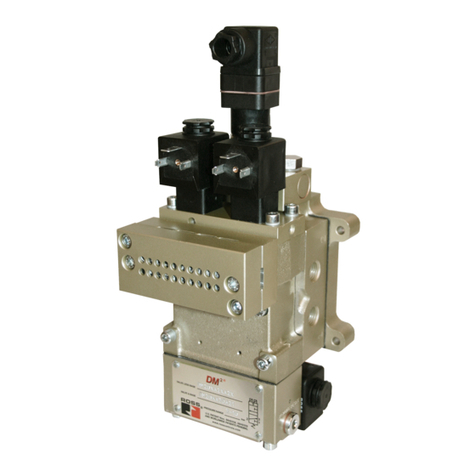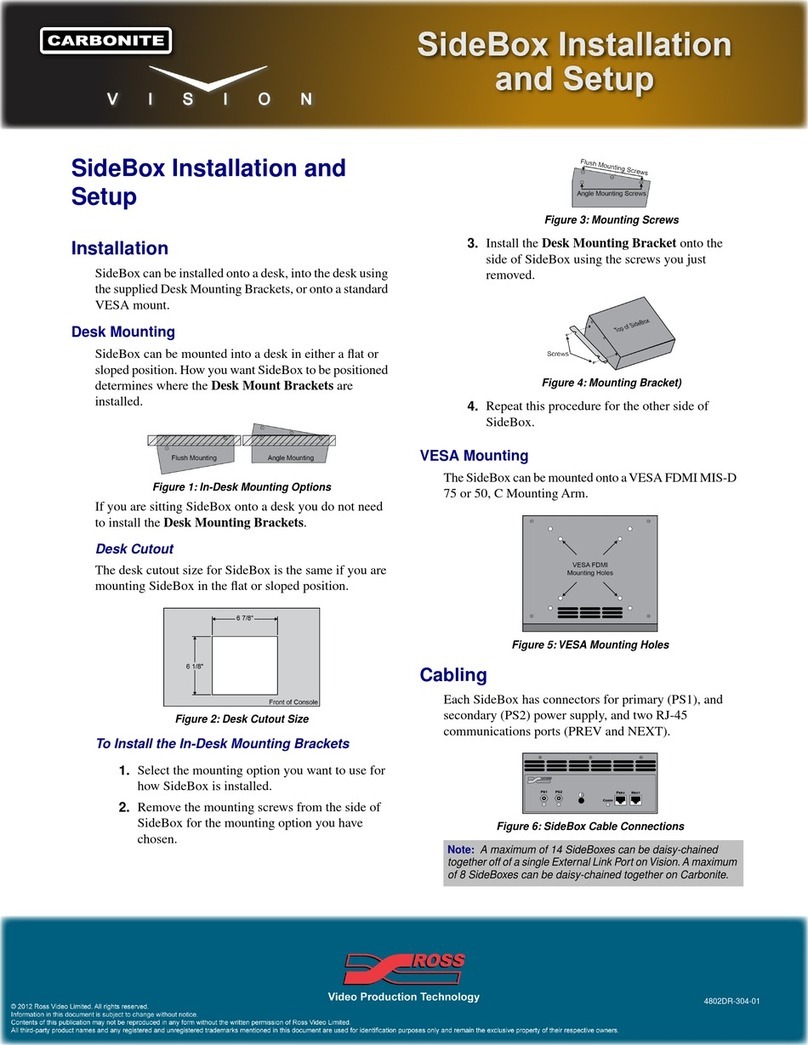
Printed in the U.S.A. – Rev. 06/19 © 2019, ROSS CONTROLS®. All Rights Reserved. Form SS097
Content subject to change.
PRE-INSTALLATION or SERVICE
1. Before servicing a valve or other pneumatic component, be sure
that all sources of energy are turned off, the entire pneumatic system
is shut off and exhausted, and all power sources are locked out (ref:
OSHA 1910.147, EN 1037).
2. All ROSS®products, including service kits and parts, should
be installed and/or serviced only by persons having training and
experience with pneumatic equipment. Because any installation can be
tampered with or need servicing after installation, persons responsible
for the safety of others or the care of equipment must check every
installation on a regular basis and perform all necessary maintenance.
3. All applicable instructions should be read and complied with before
using any fluid power system in order to prevent harm to persons
or equipment. In addition, overhauled or serviced valves must be
functionally tested prior to installation and use. If you have any
questions, call your nearest ROSS location listed in the table below.
4. Each ROSS product should be used within its specification limits.
In addition, use only ROSS parts to repair ROSS products.
WARNINGS: Failure to follow these directions can adversely affect
the performance of the product or result in the potential
for human injury or damage to property.
FILTRATION and LUBRICATION
5. Dirt, scale, moisture, etc. are present in virtually every air system.
Although some valves are more tolerant of these contaminants than
others, best performance will be realized if a filter is installed to clean
the air supply, thus preventing contaminants from interfering with the
proper performance of the equipment. ROSS recommends a filter
with a 5-micron rating for normal applications.
6. All standard ROSS filters and lubricators with polycarbonate
plastic bowls are designed for compressed air applications only. Do
not fail to use the metal bowl guard, where provided, to minimize
danger from high pressure fragmentation in the event of bowl failure.
Do not expose these products to certain fluids, such as alcohol or
liquefied petroleum gas, as they can cause bowls to rupture, creating
a combustible condition, hazardous leakage, and the potential for
human injury or damage to property. Immediately replace a crazed,
cracked, or deteriorated bowl. When bowl gets dirty, replace it or
wipe it with a clean dry cloth.
7. Only use lubricants which are compatible with materials used in
the valves and other components in the system. Normally, compatible
lubricants are petroleum based oils with oxidation inhibitors, an
aniline point between 180°F (82°C) and 220°F (104°C), and an ISO
32, or lighter, viscosity. Avoid oils with phosphate type additives
which can harm polyurethane components, potentially leading to
valve failure which risks human injury, and/or damage to property.
AVOID INTAKE/EXHAUST RESTRICTION
8. Do not restrict the air flow in the supply line. To do so could reduce
the pressure of the supply air below the minimum requirements for
the valve and thereby cause erratic action.
9. Do not restrict a valve’s exhaust port as this can adversely affect
its operation. Exhaust silencers must be resistant to clogging and
must have flow capacities at least as great as the exhaust capacities
of the valves. Contamination of the silencer can result in reduced
flow and increased back pressure.
WARNINGS:
ROSS expressly disclaims all warranties and responsibility for any
unsatisfactory performance or injuries caused by the use of the
wrong type, wrong size, or an inadequately maintained silencer
installed with a ROSS product.
POWER PRESSES
10. Mechanical power presses and other potentially hazardous
machinery using a pneumatically controlled clutch and brake
mechanism must use a press control double valve with a monitoring
device. A double valve without a self-contained monitoring device
should be used only in conjunction with a control system which
assures monitoring of the valve. All double valve installations involving
hazardous applications should incorporate a monitoring system which
inhibits further operation of the valve and machine in the event of a
failure within the valve mechanism.
ENERGY ISOLATION/EMERGENCY STOP
11. Per specifications and regulations, ROSS L-O-X® valves
and L-O-X® valves with EEZ-ON® operation are defined as energy
isolation devices, NOT AS EMERGENCY STOP DEVICES.
CAUTIONS And WARNINGS
ROSSCONTROLS USA Tel: 1-248-764-1800 www.rosscontrols.com
ROSS EUROPA GmbH Germany Tel: 49-6103-7597-100 www.rosseuropa.com
ROSS ASIA K.K. Japan Tel: 81-42-778-7251 www.rossasia.co.jp
ROSS UK Ltd. UK Tel: 44-1543-671495 www.rossuk.co.uk
ROSS SOUTH AMERICA Ltda. Brazil Tel: 55-11-4335-2200 www.rosscontrols.com.br
ROSS CONTROLS INDIA Pvt. Ltd. India Tel: 91-44-2624-9040 www.rosscontrols.com
ROSS CONTROLS (CHINA) Ltd. China Tel: 86-21-6915-7961 www.rosscontrolschina.com
ROSS FRANCE S.A.S. France Tel: 33-1-49-45-65-65 www.rossfrance.com
ROSS CANADA Canada Tel: 1-416-251-ROSS (7677) www.rosscanada.com
(6077170 CANADA INC. A
INDEPENDENT REPRESENTATIVE)
STANDARD WARRANTY
All products sold by ROSS CONTROLS are warranted for a one-year period [with the exception of
all Filters, Regulators and Lubricators (“FRLs”) which are warranted for a period of seven years]
from the date of purchase to be free of defects in material and workmanship. ROSS’ obligation
under this warranty is limited to repair or replacement of the product or refund of the purchase price paid solely at the discretion of ROSS
and provided such product is returned to ROSS freight prepaid and upon examination by ROSS is found to be defective. This warranty
becomes void in the event that product has been subject to misuse, misapplication, improper maintenance, modification or tampering.
THE WARRANTY EXPRESSED ABOVE IS IN LIEU OF AND EXCLUSIVE OF ALL OTHER WARRANTIES AND ROSS EXPRESSLY DISCLAIMS
ALL OTHER WARRANTIES EITHER EXPRESSED OR IMPLIED WITH RESPECT TO MERCHANTABILITY OR FITNESS FOR A PARTICULAR
PURPOSE. ROSS MAKES NO WARRANTY WITH RESPECT TO ITS PRODUCTS MEETING THE PROVISIONS OF ANY GOVERNMENTAL
OCCUPATIONAL SAFETY AND/OR HEALTH LAWS OR REGULATIONS. IN NO EVENT IS ROSS LIABLE TO PURCHASER, USER, THEIR
EMPLOYEES OR OTHERS FOR INCIDENTAL OR CONSEQUENTIAL DAMAGES WHICH MAY RESULT FROM A BREACH OF THE WARRANTY
DESCRIBED ABOVE OR THE USE OR MISUSE OF THE PRODUCTS. NO STATEMENT OF ANY REPRESENTATIVE OR EMPLOYEE OF
ROSS MAY EXTEND THE LIABILITY OF ROSS AS SET FORTH HEREIN.


